Traveling, studying, working or even living in the United States is the dream of millions of people around the world. However, before taking any steps in this direction, it is essential to understand how the visas for the United States, the document that legally determines the reason for your entry and the length of time you can stay in the country.
Many people believe that a visa is just a simple entry permit, but in practice it is much more than that. The type of visa defines the purpose of your stay, the activities you can carry outand even whether or not it is possible to stay permanently on American soil.
With dozens of different categories, understanding which one applies to you is essential for avoid errors, delays or negatives in the process. In addition, knowing the difference between immigrant and non-immigrant visas is what separates a temporary trip from a life plan in the United States.
That's why, in this article, we're going to clarify what a visa is, what the main types are and how each category fits different profiles and objectives. This is the starting point for anyone planning a journey to the USA, be it to tourism, study, work or permanent residence.
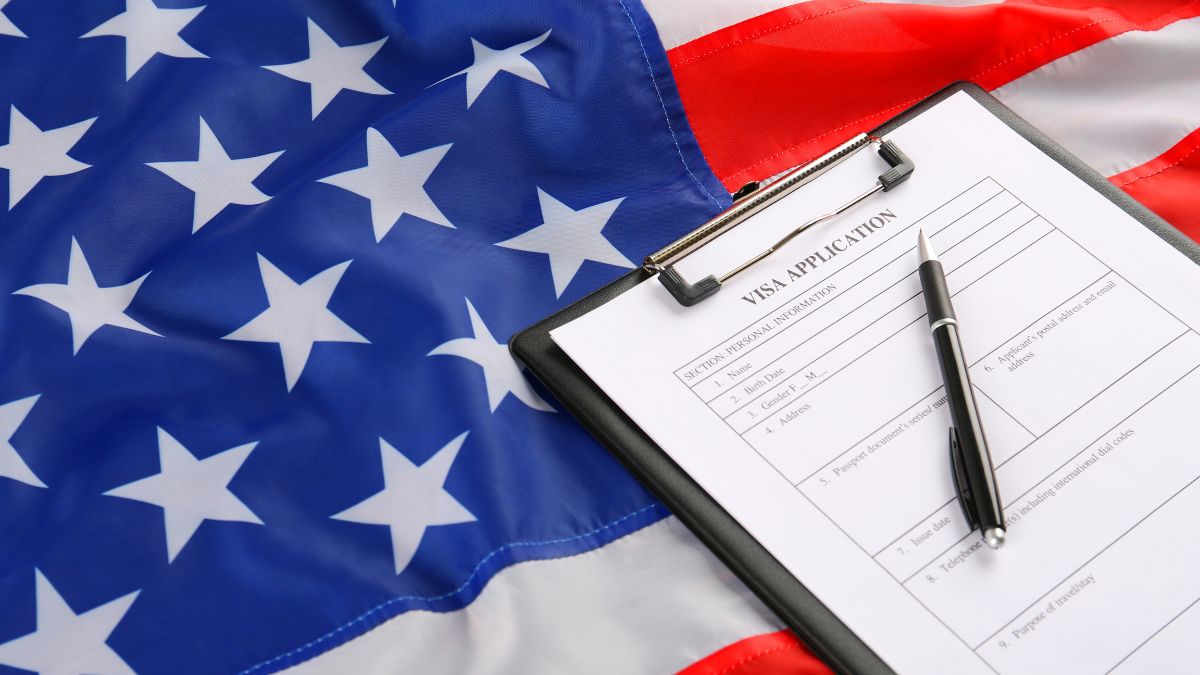
Contents
HideO seen is an authorization granted by the United States government that allows foreign citizens to enter the country for a specific purpose, such as tourism, study, work or permanent residence. It is issued by an American consulate or embassy outside US territory and is usually stamped or affixed to the passport.
In simple terms, the visa indicates the reason for your trip e the legal duration of your stay. Each category defines what the visitor can and cannot do in American territory, for example, a tourist visa does not authorize work activities, while a student visa requires enrollment in a recognized institution and proof of financial resources.
It is important to understand that the does not guarantee automatic entry in the United States. It only authorizes the traveler to request entry upon arrival at a port of entry (such as an airport), where the immigration officer (CBP) makes the final inspection and determines the length of stay allowed.
In addition, the visas for the United States are divided into two broad categories:
-
Non-immigrant visasThese are aimed at those who want to stay temporarily;
-
Immigrant visas, aimed at those who plan to live permanently in the country.
Understanding this difference is essential to choosing the right path from the start, avoiding rework and increasing the chances of the process being approved.
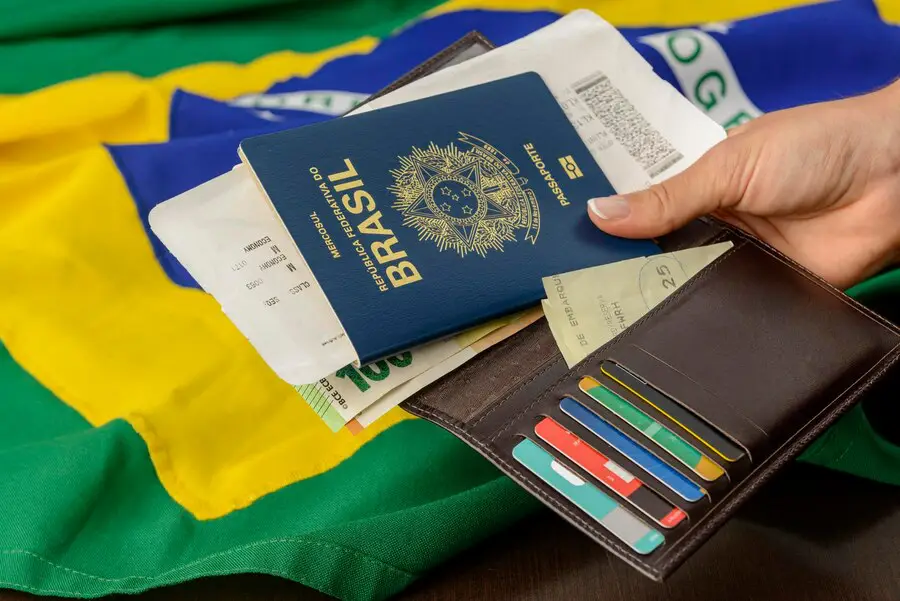
When it comes to visas for the United States, it's important to know that the American government divides entry permits into two main categories: immigrant visas e non-immigrant visas.
The difference between them lies in purpose of the trip and length of stay allowed in American territory.
The non-immigrant visas are aimed at those who want to stay temporarily in the USA, whether for tourism, study, fixed-term work or participation in specific events. The immigrant visas are intended for those who have the to live permanently in the country, with the right to permanent residence and the possibility of future citizenship.
The table below helps to visualize the main differences:
| Category | Non-immigrant visas | Immigrant visas |
|---|---|---|
| Objective | Temporary stay in the USA (tourism, study, temporary work) | Living permanently in the USA |
| Duration | Limited to the period authorized on the visa or by the CBP agent | Indefinite (the holder obtains permanent resident status) |
| Right of residence | Does not confer permanent residence | Gives permanent residence (Green Card) |
| Possibility of working | Only if the visa allows it (e.g. H-1B, L-1, O-1) | Yes, freely as a resident |
| Renewal | Needs to be renewed or requested again | It does not need to be renewed, but the resident status must be maintained |
| Examples | B1/B2 (tourism and business), F1 (student), J1 (exchange), H1B (temporary work) | EB-2 (qualified professionals), EB-5 (investor), IR (family), DV (lottery) |
In a nutshell:
-
If the goal is visit, study or work for a limited timeyou will need a non-immigrant.
-
If the goal is live in the United States permanentlyThe way to do this is through a visa for immigrant.
Knowing this difference from the outset is essential to aligning your expectations and choosing the right type of visa for your life project.
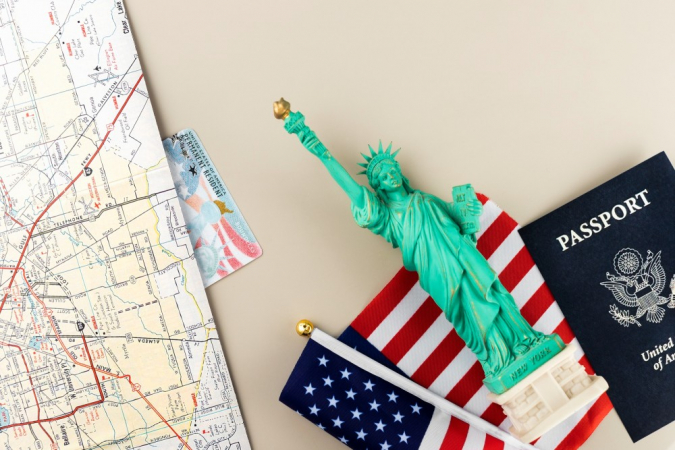
The non-immigrant visas are granted to foreigners who wish to stay temporarily in the United States, whether for leisure, study, fixed-term work or participation in specific events.
Each category has its own rules, required documents and limitations on the activities allowed in the country.
Below are the main types of visas for the United States in this category:
1. Tourism and Business Visa (B1/B2)
O B1/B2 visa is the most common among Brazilian applicants. It combines two purposes:
-
B1 (Business)The program: allows you to attend meetings, conferences, trade fairs and short-term training, without being employed in the USA.
-
B2 (Tourism)The main focus is on leisure, vacations, visits to family members, medical treatments and participation in social events.
The B1/B2 visa does not authorize paid work in American territory, and the period of stay is normally up to six months per tripThis may vary depending on the decision of the immigration officer on arrival.
This is the ideal visa for those who want to visit the United States occasionallywith no intention of taking up residence.
2. Study Visas (F, M and J)
The student visas allow you to study legally at recognized American institutions. There are three main categories:
-
F-1 visa: intended for students of academic courses such as schools, universities, MBAs and English programs at institutions accredited by the SEVP (Student and Exchange Visitor Program).
-
M-1 visa: aimed at technical and vocational courses (such as mechanics, aviation or design).
-
J-1 visa: covers cultural and educational exchange programs, including trainees, au pairs, researchers and visiting professors.
These visas require proof of registration, financial capacity to stay in the USA and, in some cases, links with the country of origin. Depending on the case, it is possible to apply for limited work authorization (such as Optional Practical Training - OPT).
3. Temporary Work Visas (H, L, O, P, among others)
Temporary work visas allow foreign professionals to carry out paid activities for a fixed term in the United States. They are usually sponsored by an American company, which needs to prove the need for hiring.
Main examples:
-
H-1B: for highly qualified professionals in specialized fields (technology, engineering, finance, etc.).
-
L-1: for the internal transfer of employees between branches or subsidiaries of the same company.
-
O-1: intended for people with extraordinary abilities in areas such as science, the arts, sports or business.
-
P-1/P-3: for athletes, artists and entertainment groups taking part in specific events.
These visas have a limited duration and, in some cases, allow dependents (spouses and children) to accompany the holder with legal status.
4. Exchange Visas, Artists and Athletes
In addition to the J-1 and P visas, there are specific categories for professionals working on cultural projects, sports competitions or artistic productions.
These visas recognize the importance of cultural and professional exchange between countries and are widely used by artists, coaches, producers, sportspeople and influencers participating in events in the USA.
Some visas allow you to extend your stay according to the schedule of activities and include members of the technical team or immediate family members.
It is essential to present detailed event documentation, contract, invitations and proof of professional qualifications.
Understanding these categories is the first step to identifying which type of visa for the United States best suits your travel purposes.
In the next chapter, we will explore the immigrant visasThese are aimed at those who want to build a permanent life in the USA, whether through work, investment or family ties.
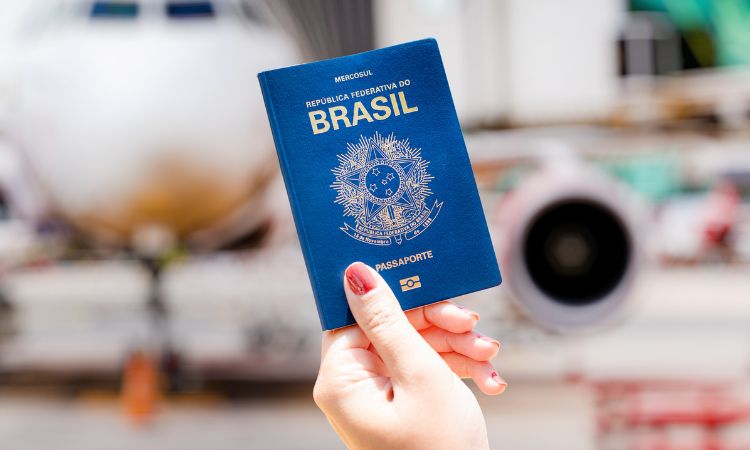
Immigrant visas are intended for people who wish to live permanently in the United States.
Those who receive this type of visa obtain legal permanent resident statusalso known as Green Cardwhich allows you to live, work and study in the country without time limitations.
There are several ways to obtain American permanent residency, but the four main categories are: family, work, investment e diversity (visa lottery).
1. Family-based visas
These visas are granted to foreigners who have close relatives who are citizens or permanent residents of the United States.
The most common are:
-
IR (Immediate Relative): for spouses, children under 21 and parents of American citizens.
-
F (Family Preference): for other family members, such as adult children or siblings of American citizens.
The approval process can vary from a few months to several years, depending on the family category and the country of origin.
2. Work-based visas
Work-based immigrant visas are aimed at qualified professionals, executives, people with exceptional skills or who receive a formal job offer in the United States.
The main ones include:
-
EB-1: for professionals with extraordinary skills, multinational executives and recognized professors or researchers.
-
EB-2: for professionals with a master's degree, doctorate or high qualification.
-
EB-2 NIW (National Interest Waiver): subcategory that waives the job offer if the candidate proves that his or her work benefits the American national interest.
-
-
EB-3: for skilled workers, technicians and professionals with a university degree.
These categories require proof of experience, training and, in many cases, certification from the employer before the US Department of Labor.
3. Investor visas (EB-5)
O EB-5 visa is aimed at foreign investors who want to immigrate permanently.
To qualify, you need to invest from US$ 800 thousand in their own business or in a project approved by the American government (Regional Center), with the obligation to generate at least 10 direct jobs for US citizens or residents.
This visa leads to Green Card and allows the investor and their family to reside legally in the United States.
4. Diversity visa (DV - "Visa Lottery")
A Diversity Visa Lottery is an annual program of the American government that grants about 50,000 immigrant visas to people from countries with a low immigration rate to the United States.
The selection is randomHowever, candidates must meet the minimum requirements of education and eligibility.
Brazil today does not qualify to participate, but citizens of other countries, such as Portugal, can apply.
These are the main paths for those seeking Green Card and wants to establish a permanent life in the United States.
In the next chapter, we'll look at how long does it take to get an american visa and the factors that can influence the approval deadline.
Explanatory Box
E-2 visa - The path of the non-immigrant investor
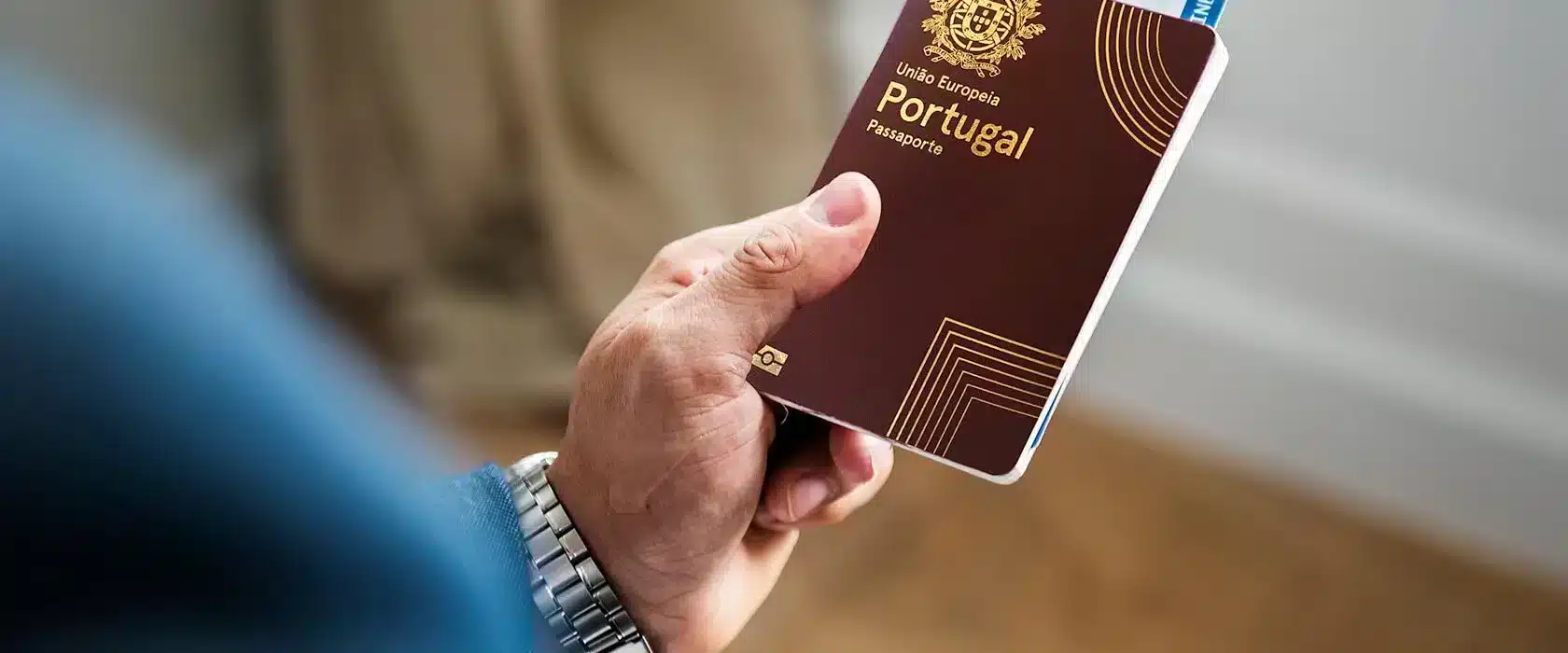
Although often mentioned alongside investment visas, the E-2 is technically a non-immigrant visa.
It allows citizens of countries with trade treaty with the USsuch as Portugaltemporarily reside in the country to run your own business in which they have made a substantial investment.
🔹 E-2 (non-immigrant): allows you to live and work while the business is active, but does not lead directly to a green card.
🔹 EB-5 (immigrant): requires greater investment, creates jobs and grants permanent residence.
In practice, the E-2 is an excellent option for those who wants to start a business and live in the United States quicklyIt can be converted into another immigration status in the future, depending on the applicant's strategy.
One of the most common doubts among those planning their journey to the United States is: "how long does it take to get my visa?"
The answer depends on several factors, such as type of visa, volume of applications to the consulate, time of year e complexity of the case.
On average, the total time involves two main stages:
-
Scheduling an interview and submitting documents at the consulate;
-
Analysis and processing of the application by the American government.
Average time per visa category
The deadlines below are general estimates based on data published by U.S. Citizenship and Immigration Services (USCIS) in October 2025on the official case processing tracking page (Processing Times), and may vary depending on the applicant's profile and the consulate responsible.
🔗 Check the latest estimates directly on the official website:
https://egov.uscis.gov/processing-times/
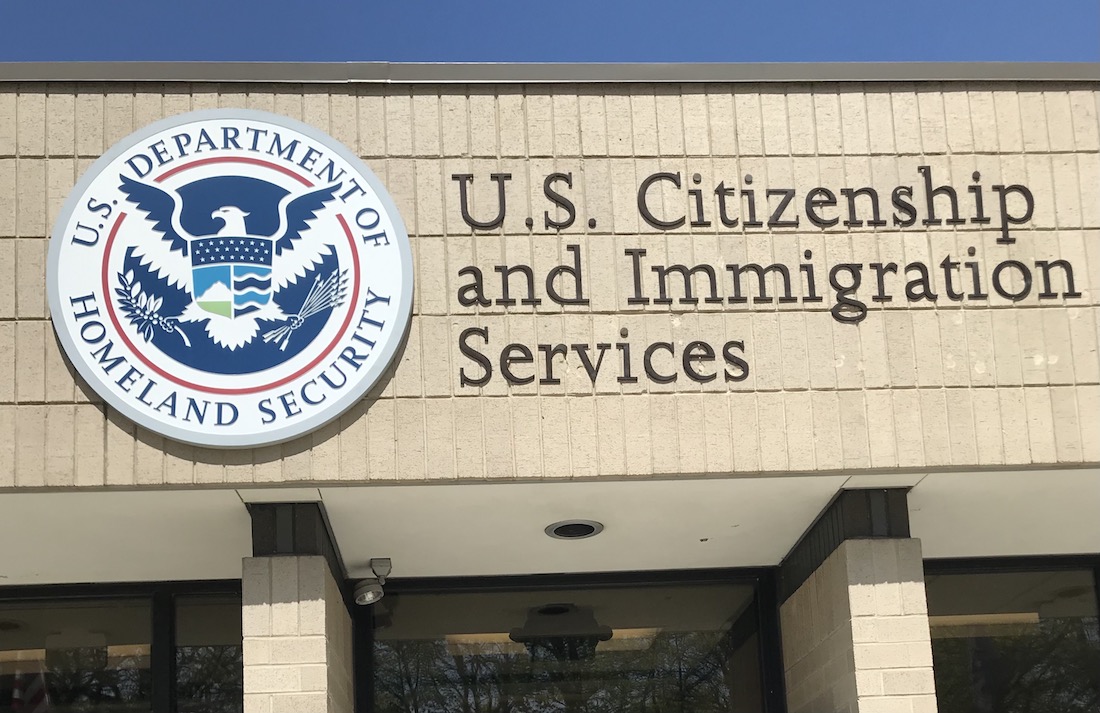
| Visa category | Average processing time (Oct/2025) |
|---|---|
| Tourism and business (B1/B2) | 2 to 6 months (may vary depending on the consulate) |
| Study (F, M, J) | 2 to 3 months after the I-20 or DS-2019 form has been issued |
| Temporary work (H, L, O, P) | 3 to 6 months, up to 1 year depending on USCIS |
| Non-immigrant investor (E-2) | 2 to 4 months after the complete documentation has been sent |
| Immigrant for work (EB-2, EB-3) | 1 to 2 years, according to USCIS and NVC processing queue |
| Immigrant investor (EB-5) | 2 to 5 years, depending on the type of investment and country of origin |
| Family (IR, F) | From a few months to 10 years (in the case of distant relatives) |
Factors influencing the deadline
Some elements can significantly speed up or slow down the process:
-
Incomplete or incorrect documentationThis generates requests for additional evidence (RFE).
-
High consular demandespecially after the vacations or before commemorative dates.
-
Rescheduled interviews or postponements for security reasons.
-
Additional security and eligibility checks (security checks).
-
Country of citizenship and priority category (for immigrant visas).
Best practices to speed up the process
-
Plan ahead. Ideally, you should start preparing your visa at least 6 months in advance of the planned date of travel.
-
Gather all the documents carefully. This avoids delays and requests for supplements.
-
Keep the information consistent. Simple errors between forms and passports can lead to temporary refusals.
-
Consider professional support. Specialized offices and partners of The Florida Lounge can help identify the best path and avoid rework.
-
Monitor official deadlines. Always check the USCIS to follow updates on the analysis times for each type of process.
In general, temporary visas (such as tourism and study) have faster processeswhile immigrant visas require detailed analysis and longer waiting time.
With the right preparation and guidance, you can reduce risks and optimize deadlines in any kind of process.
Choosing the right type of visa for the United States is an essential step in ensuring that your application is approved and that your experience in the country goes without a hitch.
Many requests end up being denied due to a simple lack of understanding of the rules and limitations of each category, and this can be avoided with good planning.
Here are some practical guidelines for identifying the ideal visa according to your objective.
1. Clearly define the purpose of your trip
The first step is to understand why you want to go to the United States.
This answer determines the entire path to follow.
Here are some examples:
| Applicant profile | Objective | Recommended visa type |
|---|---|---|
| Tourist or family visitor | Leisure trips, vacations, events or visits to relatives | B2 (Tourism) |
| Professionals attending meetings or fairs | Short business trip with no employment relationship | B1 (Business) |
| Student | Academic, technical or exchange courses | F1, M1 or J1 |
| Qualified professional | Temporary work offered by American company | H1B or L1 |
| Entrepreneur with Portuguese citizenship | Investing in and running your own business | E2 (non-immigrant investor) |
| High net worth investor | Obtaining permanent residence (Green Card) via investment | EB-5 (immigrant investor) |
| Highly qualified professional | Immigrating on the basis of merit or national interest | EB-2 NIW |
Being clear about your objective avoids common mistakes - such as applying for a tourist visa with the intention of studying or working, which can result in immediate refusal e negative record in the applicant's history.
2. Understand the restrictions of each type of visa
Each category has specific limits about what the bearer can and cannot do in the United States.
For example:
-
O B1/B2 visa doesn't allow you to work or study formally.
-
O student visa (F1) requires active enrollment e authorization for any paid activity.
-
The E2 visaalthough it allows you to work, restricts activity to the business invested in, it is not possible to work for another company.
Understanding these differences prevents applicants from violating their immigration status, which can lead to severe penalties, including ban on re-entry into the country.
3. Plan the process in advance
Some visas require complex documentation, such as detailed business plans, certificates of professional experience, sworn translations and even criminal record certificates.
Ideally, you should start preparing at least six months before of the intended date of travel, especially for study, work and investment categories.
4. Avoid common applicant mistakes
The most common misconceptions in visas for the United States include:
-
Filling in forms with inconsistent data (names, dates and travel history).
-
Underestimating preparation time for consular interviews.
-
Declare vague information about employment, income or ties in the country of origin.
-
Choosing the wrong type of visa and try to correct the error after submission (a process that can be more time-consuming and expensive).
The good news is that these mistakes are completely avoidable with appropriate career guidance e prior planning.
5. Seek expert advice
American immigration legislation changes frequently, and each profile requires an individualized analysis.
It is therefore highly recommended to seek the support of qualified professionalsThey need to understand not only the rules of USCIS and the Department of State, but also those of the State Department. personal and business goals of who is applying.
O The Florida Lounge connects you to immigration experts partnerswho can assess your case and recommend the best type of visa according to your life plan and investments.
Understanding the different visas for the United States is the starting point for anyone who wants to turn the American dream into a real, strategic plan.
Each category has specific rules, deadlines and requirements, and knowing which one your profile fits into is the first step to making safe decisions, avoiding rework and speeding up the process.
Throughout this article, we have seen that there are several possible pathsfrom the tourist who wants to get to know the country, to the investor or qualified professional who wants to build a life in the USA.
Regardless of your goal, information and planning are the keys to a smooth and efficient process.
It is important to remember that this content is information e is not a substitute for legal or immigration advice.
American laws and guidelines change frequently, and only an individual analysis by an authorized professional can define the best strategy for your case.
If you're ready to take the next step, fill in the form below and talk to a immigration specialist partner of The Florida Lounge.
Our team can connect you with qualified professionals who will evaluate your profile, indicate the most suitable type of visa e help you build the right path for your journey in the United States.
❓ Frequently asked questions about visas for the United States (FAQ)
1. What is the difference between a visa and a green card?
O seen is a temporary authorization to enter the United States for a specific purpose, such as tourism, study or work.
The Green Card is the legal permanent residenceThese visas are granted to those who enter the country on temporary visas. immigrantsuch as EB-2, EB-3 or EB-5.
2. Do I need a visa to make a stopover in the United States?
Yes. Even if the passenger doesn't leave the airport, most travelers who do connection in American territory needs a transit visa (C-1) or another type of valid visa, depending on the country of origin.
3. Does the American visa guarantee entry to the United States?
No. The visa authorizes the entry requestbut the final decision is made by a immigration officer (CBP) on arrival at the airport or port of entry.
4. Can I change my visa type once I'm in the USA?
In some cases, yes. It is possible request a change of status (for example, from student to worker), as long as the holder is legal and meets all the requirements.
However, this change must be approved by USCIS e it's not automatic.
5. How long before my trip should I apply for a visa?
The ideal is to start the process at least 6 months in advanceespecially during periods of high demand.
Deadlines vary according to the consulate, the type of visa and the time of year.
6. Can Brazilians with Portuguese citizenship apply for an E-2 visa?
Yes! E-2 is a non-immigrant visa available to citizens of countries that have trade treaty with the USsuch as Portugal.
Brazilians who own dual portuguese citizenship can apply for an E-2 visa and live legally in the United States while running their own business.
7. Where can I find current visa processing times?
The official estimates are available on the U.S. Citizenship and Immigration Services (USCIS).
You can consult the updated information here:
👉 https://egov.uscis.gov/processing-times/
Official and complementary sources
1. U.S. Citizenship and Immigration Services (USCIS)
The body responsible for processing and administering visas and immigration in the USA.
-
Official processing times page (consulted in October 2025):
🔗 https://egov.uscis.gov/processing-times/ -
Information on work and immigrant visa categories (EB-1, EB-2, EB-3, EB-5):
🔗 https://www.uscis.gov/working-in-the-united-states -
General rules on change of status, extensions and legal stay:
🔗 https://www.uscis.gov/visit-united-states/extend-your-stay
2. U.S. Department of State (DOS)
The agency responsible for issuing visas and operating consulates and embassies.
-
Types of non-immigrant visas (B1/B2, F1, J1, H1B, L1, O1, P1, etc.):
🔗 https://travel.state.gov/content/travel/en/us-visas.html -
Types of immigrant visas and green card categories:
🔗 https://travel.state.gov/content/travel/en/us-visas/immigrate.html -
Diversity Visa Program (Lottery):
🔗 https://dvprogram.state.gov/
3. U.S. Embassy and Consulates in Brazil
A source of specific information for Brazilians on scheduling, fees and documentation.
-
Official website:
🔗 https://br.usembassy.gov/pt/ -
Page on non-immigrant visas:
🔗 https://br.usembassy.gov/pt/visas-pt/nonimmigrant-visas-pt/ -
Immigrant visas page:
🔗 https://br.usembassy.gov/pt/visas-pt/immigrant-visas-pt/
4. U.S. Customs and Border Protection (CBP)
Authority responsible for inspection on entry into the USA.
-
Explanation of admission and inspection at the port of entry:
🔗 https://www.cbp.gov/travel/international-visitors/know-before-you-visit
5. U.S. Department of Commerce - Treaty Countries (E-2)
Official list of countries with a trade and navigation treaty with the USA (for the E-2 visa).
|
Getting your Trinity Audio player ready...
|
Thalita Felisardo
Born on VHS, a Super Nintendo warrior and a lifelong theme park addict. Broadcaster, publicist and Orlando explorer by passion! I used to be Mickey's neighbor and I've made over 100 visits to Disney and Universal parks 🎢. Today I've swapped the enchanted castles for the rocky mountains of Canada, but my heart is still divided between the Northern Lights and the Magic Kingdom fireworks.



